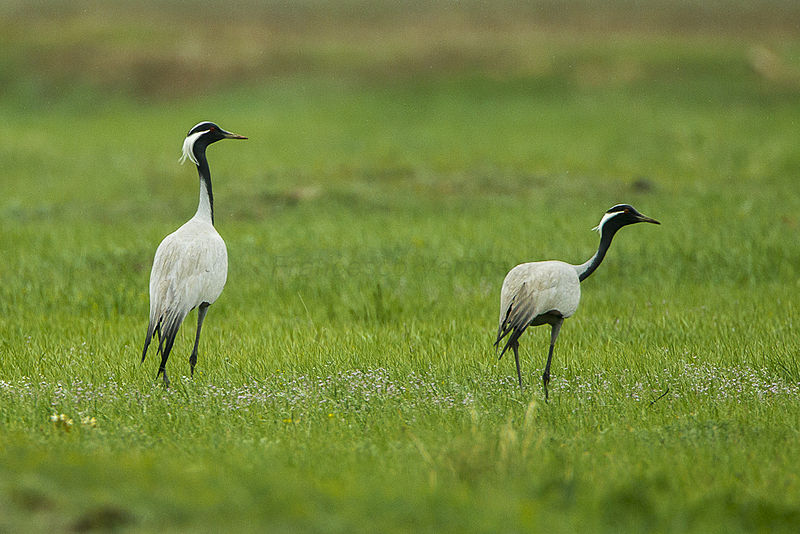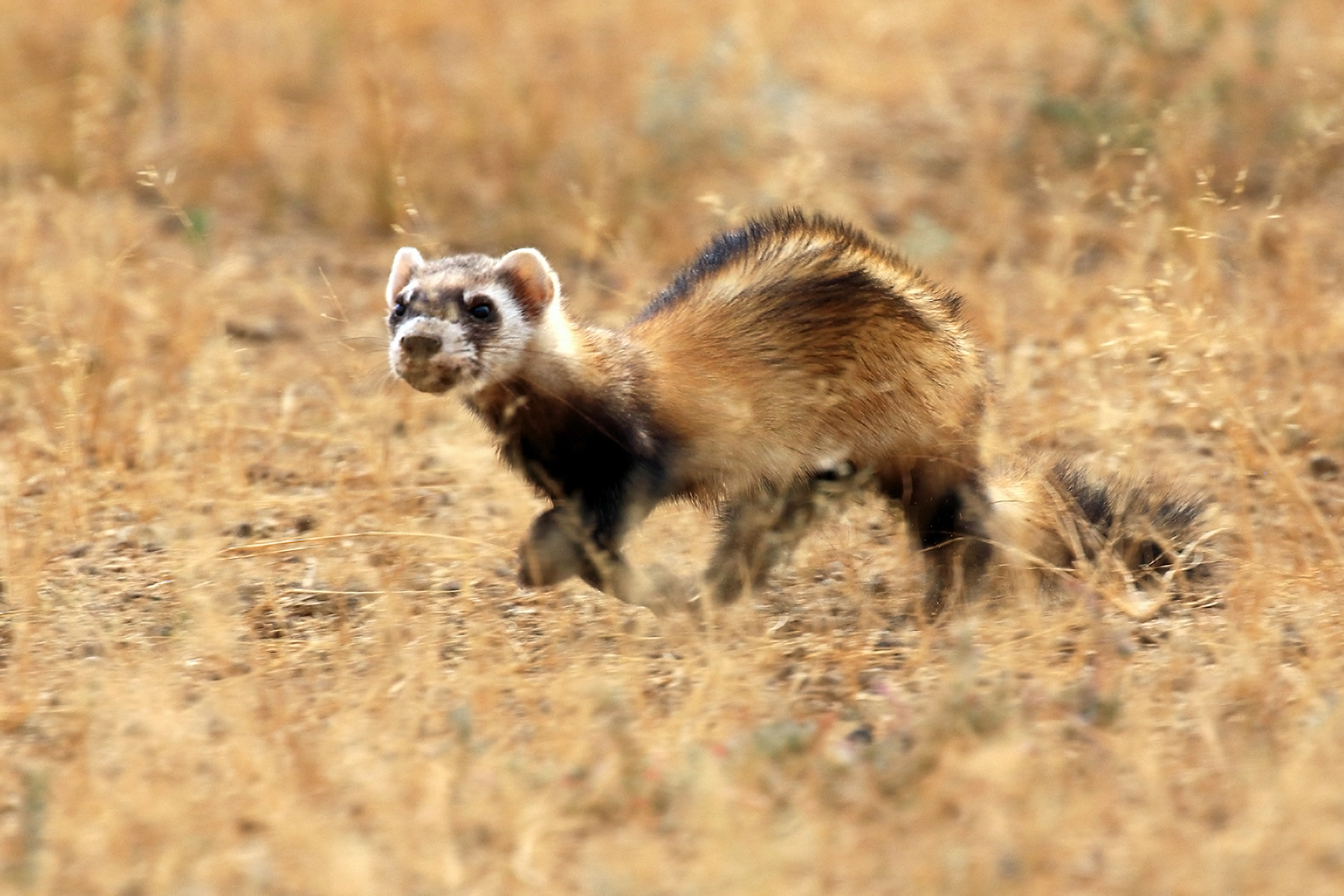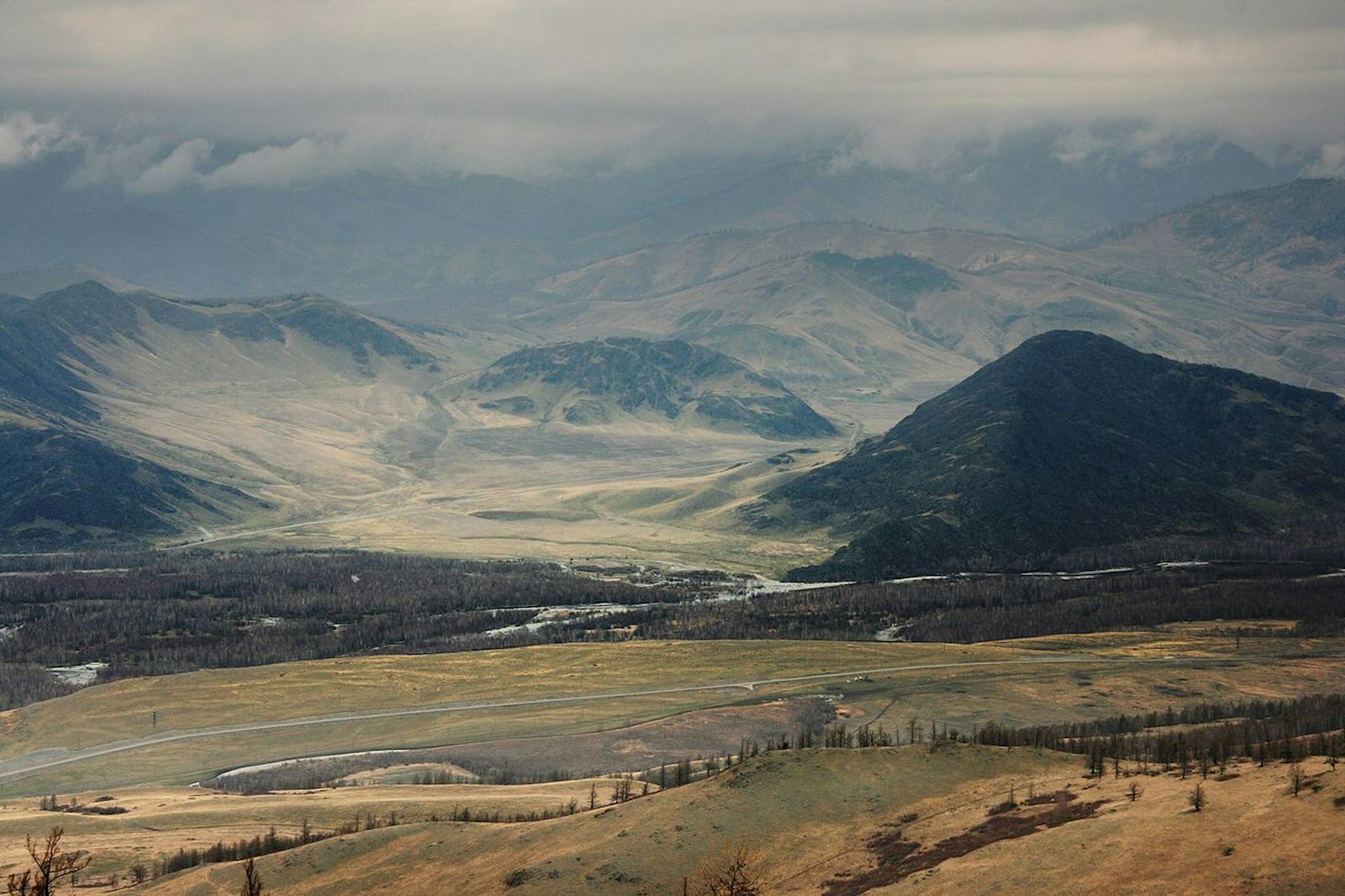Altai Steppe and Semi-Desert
The ecoregion’s land area is provided in units of 1,000 hectares. The conservation target is the Global Safety Net (GSN1) area for the given ecoregion. The protection level indicates the percentage of the GSN goal that is currently protected on a scale of 0-10. N/A means data is not available at this time.
Bioregion: Altai Mountain Forests, Grasslands & Desert Steppe (PA37)
Realm: Central Eurasia
Ecoregion Size (1000 ha):
8,313
Ecoregion ID:
724
Conservation Target:
49%
Protection Level:
1
States: Kazakhstan, China, Russia
This starkly beautiful landscape of windblown grass and weirdly eroded rocky outcrops is a haven for hundreds of bird species. Altai marmot, steppe pika, and Siberian zokor are valuable prey for the endangered steppe eagles, saker falcons, and eastern imperial eagles, as well as the elusive Pallas’s cat. Demoiselle cranes and argali sheep raise their young in the tussock grasslands.
This ecoregion forms a transition between the forests of the Altai Mountain ecoregions to the north and east and the Kazakh desert plain to the west. The upper waters of the great Irtysh River flow here, and a narrow band of the ecoregion extends into the Altai mountains along the course of the Bukhtama River, a major tributary.

The flagship species of the Altai Steppe and Semi-Desert ecoregion is the Demoiselle crane. Image credit: Francesco Veronesi, Creative Commons
The climate is strongly continental, with short, warm summers and long, cold, and dry winters. The average annual temperature is 3.2°C, and monthly temperatures are 15.4-20.9°C in the northern part of the ecoregion, with 450 mm of precipitation a year. In the south of the ecoregion, the average annual temperature is 2.8°C, monthly averages -16.6–20.6°C and it is drier, with 325 mm or less mean precipitation per year.
Much of the ecoregion is hilly or has low mountains. Granite and metamorphic rock outcrops are common. Both elevated and lowland areas are dominated by communities of fescue, feather-grass, and hardy shrubs with grass species such as steppe fescue, Russian-wild rye, Stipa splendens, S. zalesskii, S. lessingiana, S. sareptana, and hardy plants and shrubs such as forage kochia, Pamirian winterfat, Iberian spirea, Mongolian ephedra, Caragana pygmaea, and Seriphidium sublessingianum.

Wild steppe polecat. Image credit: Andrey Giljov, Creative Commons
Many areas of soil are saline, and salt-tolerant plants such as sea milkwort and Artemisia rupestris are found. Strips of riverine forest exist beside major river courses consisting of poplar and willow species with thickets of honeysuckle and rose species. Endemic plants include Caragana bongardiana.
Argali sheep hide amongst the rocks to raise their lambs and graze the steppe grasses. Pallas’s cats use the abundant tussocks and rocks for cover. Altai marmots feed on grasses and live in communal burrow systems. They are an important prey species for Pallas’s cat and birds of prey, along with the endemic small mammals steppe pika and Siberian zokor.
The rivers, small lakes, and dry grasslands of the ecoregion support numerous bird species, including steppe and semi-desert specialists such as the endangered steppe eagle and saker falcon, pied wheatear, and grey-necked bunting. Elegant demoiselle crane nest in areas of fescue and artemisia in proximity to streams and shallow lakes.
_in_flight-CC-Charles%20J%20Sharp-2014.jpg)
Great cormorant in flight. Image credit: Charles J Sharp, Creative Commons
The Irtysh is dammed for hydroelectric power within the ecoregion, at Bukhtarma and Oskemen, forming reservoir areas upstream. Around these, along rivers, and south of the Tarbagatay Mountains on the southern edge of the ecoregion, grasslands have been replaced by large, often irrigated, agricultural areas.
Wheat is a major crop as it is quite resistant to drought (due to winter freezing of the soil, spring wheat is cultivated). Millet, corn, barley, oil flax, and sunflower are also grown. Extensive livestock raising is the other major form of land use.
The eastern strip of this ecoregion, which follows the Bukhtama river valley, is now part of the Katon-Karagay UNESCO Biosphere Reserve, declared in 2014. This area also touches upon the Ukok Quiet Zone within the Golden Mountains of Altai World Heritage Centre. Except for these, there are no protected areas within the ecoregion.
Intensification of arable farming is occurring within the ecoregion, using more water, fertilizer, and pesticides. Overgrazing is an important problem in the north of the ecoregion, whilst the abandonment of nomadic forms of pastoralism is changing the steppe in other areas. Trappers and poachers threaten the birds of prey, and fishing and tourism impact key areas.
Priority conservation actions for the next decade
- Prevent overgrazing.
- Increase protections for steppe and semi-desert areas.
- Prevent trapping of birds of prey.
-
-
1. BirdLife International. 2019a. Important Bird Areas factsheet: Eastern Kazakhstan uplands. [Online]. [Accessed 2nd December 2019]. Available from: http://datazone.birdlife.org/site/factsheet/22180
2. Korolyuk, A. Yu. 2014. Plant communities of the Class Festuco-Brometea in the West Siberian Plane. Vegetation of Russia. 25. pp.45-70.
3. BirdLife International. 2019b. Important Bird Areas factsheet: Western and northern foothills of the Kalba Range. [Online]. [Accessed 2nd December 2019]. Available from: http://datazone.birdlife.org/site/factsheet/21920 -
Cite this page: Altai Steppe and Semi-Desert. Ecoregion Snapshots: Descriptive Abstracts of the Terrestrial Ecoregions of the World, 2021. Developed by One Earth and RESOLVE. https://www.oneearth.org/ecoregions/altai-steppe-and-semi-desert/
-

.png?auto=compress%2Cformat&w=300)

